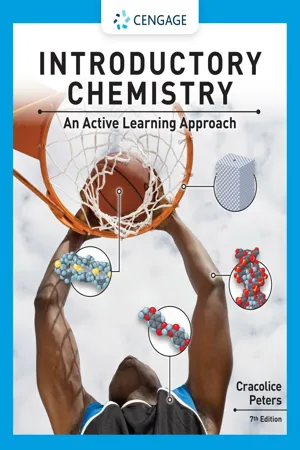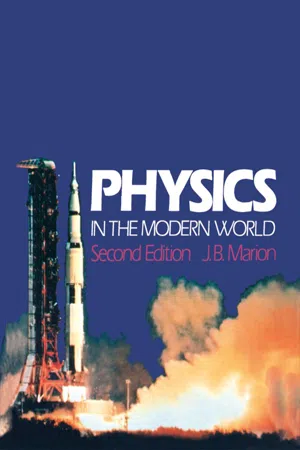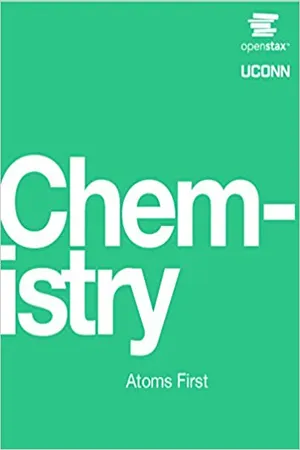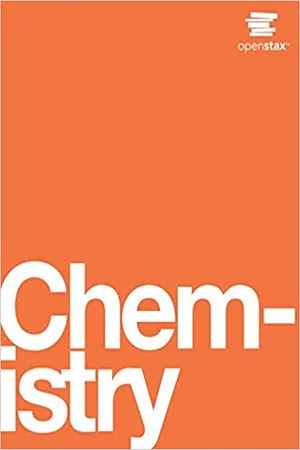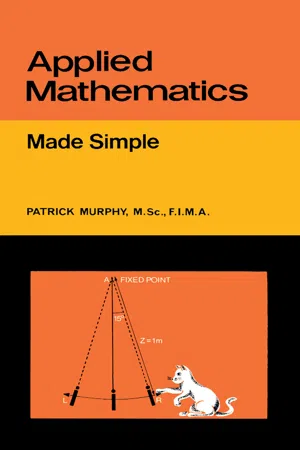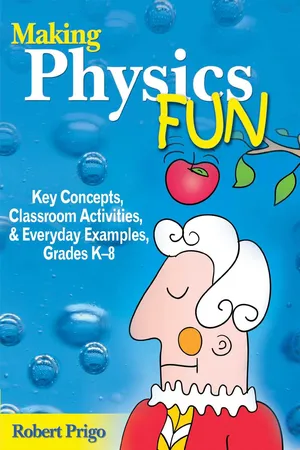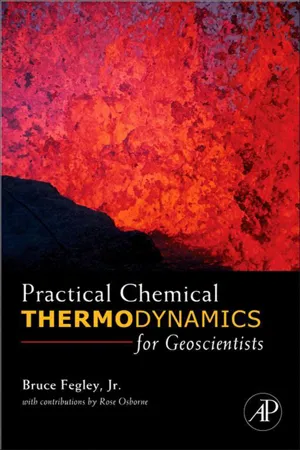Chemistry
Boyle's Law
Boyle's Law states that the pressure of a gas is inversely proportional to its volume when the temperature and amount of gas are constant. In other words, as the volume of a gas decreases, its pressure increases, and vice versa. This fundamental principle helps to understand the behavior of gases and is a key concept in the study of thermodynamics.
Written by Perlego with AI-assistance
Related key terms
1 of 5
12 Key excerpts on "Boyle's Law"
- eBook - PDF
Introductory Chemistry
An Active Learning Approach
- Mark Cracolice, Edward Peters, Mark Cracolice(Authors)
- 2020(Publication Date)
- Cengage Learning EMEA(Publisher)
Copyright 2021 Cengage Learning. All Rights Reserved. May not be copied, scanned, or duplicated, in whole or in part. Due to electronic rights, some third party content may be suppressed from the eBook and/or eChapter(s). Editorial review has deemed that any suppressed content does not materially affect the overall learning experience. Cengage Learning reserves the right to remove additional content at any time if subsequent rights restrictions require it. 139 4.6 Boyle’s Law: Volume and Pressure where subscripts 1 and 2 refer to the first and second measurements of pressure and volume at constant temperature. Proportional Reasoning An inverse proportionality has the algebraic form y ~ 1 x . A common example of an inverse proportionality is the relationship between the time needed to travel between two points and the speed at which you drive. Mathematically, the proportionality is time ~ 1 speed . If you increase your speed, you decrease the value of 1 speed and therefore decrease the time needed for the trip. If your speed doubles, the time is cut in half. To change an inverse proportionality to an equality, a pro- portionality constant is introduced: y 5 k 1 x . The product of the two variables is therefore a con- stant: xy 5 k. Since the product must always equal a fixed number, when one value goes up, the other must go down proportionally. Thinking About Your Thinking Target Check 4.4 Assume constant temperature and amount of gas. (a) If the final pressure is less than the initial pres- sure, how will the final volume compare with the initial volume? (b) If the final volume is greater than the initial volume, how will the final pressure compare with the initial pressure? Active Example 4.4 Boyle’s Law A gas sample occupies 5.18 liters at 776 torr. Find the volume of the gas if the pressure is changed to 827 torr. Temperature and amount remain constant. Think Before You Write Ignore the fact that we are in the Boyle’s Law section of the textbook. - eBook - ePub
- Jerry Marion(Author)
- 2012(Publication Date)
- Academic Press(Publisher)
T held constant, Boyle found that the product of pressure and volume always remains constant. That is,FIGURE 10-9 Robert Boyle discovered the relationship that connects the volume and the pressure of a confined gas at constant temperature: PV = constant.P V = constant(10-8)(when T is contant)(10-8)This relationship is called Boyle’s law .For a series of three different conditions such as those shown in Fig. 10-9 , we have(10-8a)P 1V 1=P 2V 2=P 3V 3(when T is constant)(10-8a)In order to halve the volume of a gas, the pressure must be doubled , and so forth.For a particular sample of gas, the “constant” in PV = constant is the same for all pressure−volume combinations. But for a different quantity of gas, the “constant” will have a different value.The Law of Charles and Gay-Lussac
An extension of Boyle’s law was made in 1802 by the French physicists Jacques Charles (1746-1823) and Joseph Louis Gay-Lussac (1778-1850), who, independently of one another, discovered the way in which the volume of a gas varies with temperature for constant pressure.In order to see the way in which the volume and temperature of a gas are related, let us examine a specific case. Suppose that we confine a certain quantity of gas in a cylinder. We adjust the conditions until the temperature is 0 °C and the volume of the gas 273 cm3 (see Fig. 10-10 ). For all of the remaining operations, we maintain the same pressure . If we lower the temperature to − 1 °C, we find that the volume of the gas decreases to 272 cm3 . At a temperature of −2 °C, the volume is 271 cm3 . That is, for each degree that the temperature is lowered, the volume decreases by 1 cm3 or of the original volume. When T = 173 °C is reached, we find V = 100 cm3 . If the gas continues to behave in this way, we would expect that a temperature of − 273 °C would result in zero volume. We cannot actually reach this extreme condition because (a) any real gas would liquefy at a temperature above − 273 °C and (b) the temperature − 273 °C can never be attained in any real system. In spite of these practical difficulties, the temperature T = − 273 °C has an important significance because it represents the lowest temperature that is conceivable (even if it cannot actually be attained - eBook - PDF
Chemistry
An Atoms First Approach
- Steven Zumdahl, Susan Zumdahl, Donald J. DeCoste, , Steven Zumdahl, Steven Zumdahl, Susan Zumdahl, Donald J. DeCoste(Authors)
- 2020(Publication Date)
- Cengage Learning EMEA(Publisher)
We will describe the characteristics of an ideal gas more completely in Section 8.3. One common use of Boyle’s law is to predict the new volume of a gas when the pressure is changed (at constant temperature), or vice versa. Because deviations from Boyle’s law are so slight at pressures close to 1 atm, in our calculations we will assume that gases obey Boyle’s law (unless stated otherwise). Boyle’s Law I Sulfur dioxide (SO 2 ), a gas that plays a central role in the formation of acid rain, is found in the exhaust of automobiles and power plants. Consider a 1.53-L sample of gaseous SO 2 at a pressure of 5.6 3 10 3 Pa. If the pressure is changed to 1.5 3 10 4 Pa at a constant temperature, what will be the new volume of the gas? Where are we going? To calculate the new volume of gas What do we know? ❯ P 1 5 5.6 3 10 3 Pa ❯ P 2 5 1.5 3 10 4 Pa ❯ V 1 5 1.53 L ❯ V 2 5 ? What information do we need? ❯ Boyle’s law PV 5 k How do we get there? What is Boyle’s law (in a form useful with our knowns)? P 1 V 1 5 P 2 V 2 What is V 2 ? V 2 5 P 1 V 1 P 2 5 5.6 3 10 3 Pa 3 1.53 L 1.5 3 10 4 Pa 5 0.57 L The new volume will be 0.57 L. Reality Check The new volume (0.57 L) is smaller than the original volume. As pres- sure increases, the volume should decrease, so our answer is reasonable. See Exercise 8.43 INTERACTIVE EXAMPLE 8.2 SOLUTION Boyle’s law also can be written as P 1 V 1 5 P 2 V 2 PV (L atm) 0 22.25 P (atm) 1.00 0.75 0.50 0.25 22.30 22.35 22.40 22.45 Ne O 2 CO 2 Ideal FIGURE 8.6 A plot of PV versus P for several gases at pressures below 1 atm. An ideal gas is expected to have a constant value of PV, as shown by the dotted line. Carbon dioxide shows the largest change in PV, and this change is actually quite small: PV changes from about 22.39 L ? atm at 0.25 atm to 22.26 L ? atm at 1.00 atm. Thus Boyle’s law is a good approximation at these relatively low pressures. V = 1.53 L V = ? 5.6 × 10 3 Pa 1.5 × 10 4 Pa ▲ As pressure increases, the volume of SO 2 decreases. - eBook - PDF
- William R. Robinson, Edward J. Neth, Paul Flowers, Klaus Theopold, Richard Langley(Authors)
- 2016(Publication Date)
- Openstax(Publisher)
V is linear. The relationship between the volume and pressure of a given amount of gas at constant temperature was first published by the English natural philosopher Robert Boyle over 300 years ago. It is summarized in the statement now known as Boyle’s law: The volume of a given amount of gas held at constant temperature is inversely proportional to the pressure under which it is measured. Example 8.8 Volume of a Gas Sample The sample of gas in Figure 8.13 has a volume of 15.0 mL at a pressure of 13.0 psi. Determine the pressure of the gas at a volume of 7.5 mL, using: (a) the P-V graph in Figure 8.13 (b) the 1 P vs. V graph in Figure 8.13 (c) the Boyle’s law equation Comment on the likely accuracy of each method. Solution (a) Estimating from the P-V graph gives a value for P somewhere around 27 psi. (b) Estimating from the 1 P versus V graph give a value of about 26 psi. (c) From Boyle’s law, we know that the product of pressure and volume (PV) for a given sample of gas at a constant temperature is always equal to the same value. Therefore we have P 1 V 1 = k and P 2 V 2 = k which means that P 1 V 1 = P 2 V 2 . Using P 1 and V 1 as the known values 13.0 psi and 15.0 mL, P 2 as the pressure at which the volume is unknown, and V 2 as the unknown volume, we have: P 1 V 1 = P 2 V 2 or 13.0 psi × 15.0 mL = P 2 × 7.5 mL Solving: P 2 = 13.0 psi × 15.0 mL 7.5 mL = 26 psi It was more difficult to estimate well from the P-V graph, so (a) is likely more inaccurate than (b) or (c). The calculation will be as accurate as the equation and measurements allow. Check Your Learning The sample of gas in Figure 8.13 has a volume of 30.0 mL at a pressure of 6.5 psi. Determine the volume Chapter 8 | Gases 411 of the gas at a pressure of 11.0 psi, using: (a) the P-V graph in Figure 8.13 (b) the 1 P vs. V graph in Figure 8.13 (c) the Boyle’s law equation Comment on the likely accuracy of each method. - eBook - PDF
- Paul Flowers, Klaus Theopold, Richard Langley, William R. Robinson(Authors)
- 2015(Publication Date)
- Openstax(Publisher)
V is linear. The relationship between the volume and pressure of a given amount of gas at constant temperature was first published by the English natural philosopher Robert Boyle over 300 years ago. It is summarized in the statement now known as Boyle’s law: The volume of a given amount of gas held at constant temperature is inversely proportional to the pressure under which it is measured. Example 9.8 Volume of a Gas Sample The sample of gas in Figure 9.13 has a volume of 15.0 mL at a pressure of 13.0 psi. Determine the pressure of the gas at a volume of 7.5 mL, using: (a) the P-V graph in Figure 9.13 (b) the 1 P vs. V graph in Figure 9.13 (c) the Boyle’s law equation Comment on the likely accuracy of each method. Solution (a) Estimating from the P-V graph gives a value for P somewhere around 27 psi. (b) Estimating from the 1 P versus V graph give a value of about 26 psi. (c) From Boyle’s law, we know that the product of pressure and volume (PV) for a given sample of gas at a constant temperature is always equal to the same value. Therefore we have P 1 V 1 = k and P 2 V 2 = k which means that P 1 V 1 = P 2 V 2 . Using P 1 and V 1 as the known values 13.0 psi and 15.0 mL, P 2 as the pressure at which the volume is unknown, and V 2 as the unknown volume, we have: P 1 V 1 = P 2 V 2 or 13.0 psi × 15.0 mL = P 2 × 7.5 mL Solving: P 2 = 13.0 psi × 15.0 mL 7.5 mL = 26 psi It was more difficult to estimate well from the P-V graph, so (a) is likely more inaccurate than (b) or (c). The calculation will be as accurate as the equation and measurements allow. Check Your Learning The sample of gas in Figure 9.13 has a volume of 30.0 mL at a pressure of 6.5 psi. Determine the volume Chapter 9 | Gases 469 of the gas at a pressure of 11.0 psi, using: (a) the P-V graph in Figure 9.13 (b) the 1 P vs. V graph in Figure 9.13 (c) the Boyle’s law equation Comment on the likely accuracy of each method. - eBook - PDF
Chemistry
The Molecular Nature of Matter
- Neil D. Jespersen, Alison Hyslop(Authors)
- 2021(Publication Date)
- Wiley(Publisher)
Let’s imagine that one wall of a gas container is a movable piston that we can push in (or pull out) and so change the volume (see Figure 10.13). If we reduce the volume by one-half, we double the number of molecules per unit volume. This would double the number of collisions per second with each unit area of the wall and therefore double the pressure. Thus, cutting the volume in half forces the pressure to double, which is exactly what Boyle discovered: P ∝ 1 __ V or V ∝ 1 __ P Gay-Lussac’s Law (Pressure–Temperature Law) As you learned earlier, the kinetic theory tells us that increasing the temperature increases the average velocity of gas particles. At higher velocities, the particles strike the container’s walls more frequently and with greater force. If we don’t change the volume, the area being struck remains the same, so the force per unit area (the pressure) must increase. Thus, the kinetic theory explains how the pressure of a fixed amount of gas is proportional to temperature (at constant volume), which is the pressure–temperature law of Gay-Lussac. Charles’ Law (Temperature–Volume Law) We’ve just seen that the kinetic theory predicts that increasing the temperature should increase the pressure if the volume doesn’t change. But suppose we wanted to keep the pressure constant when we raised the temperature. We could only do this if the volume of the container expanded (and therefore the surface area of the container walls increased) as the temperature increased. Therefore, a gas expands with increasing T in order to keep P constant, which is another way of saying that V is proportional to T at constant P. Thus, the kinetic theory explains Charles’ law. Dalton’s Law of Partial Pressures The law of partial pressures is actually evidence for that part of the third postulate in the kinetic theory that pictures particles of an ideal gas mov- ing in straight lines between collisions, neither attracting nor repelling each other (see Figure 10.14). - eBook - ePub
- Jeffrey Gaffney, Nancy Marley(Authors)
- 2017(Publication Date)
- Elsevier(Publisher)
law of combining volumes . For chemical reactions involving gases where the temperature and pressure do not change, volume relationships are the same as molar relationships. For cases where the temperature and pressure change during the reaction, the ideal gas law must be used to determine the amounts of products and reactants in moles.Example 6.10: Determining the Volume of Products in a Gas Phase Chemical Reaction How many liters of nitrogen monoxide are required to produce 3.0 L of nitrogen dioxide from the reaction with oxygen?1. Write the balanced chemical equation.2NO(g) + O2 (g) → NO2 (g)2. Determine the volume of product formed.According to the chemical equation, 2 L of NO will produce 1 L of NO2 .So, it will require 2 × 3.0 L = 6.0 L of NO to produce 3.0 L of NO2 .Important Terms
Absolute zero the lowest temperature that is theoretically possible, at which all molecular motion stops.Avogadro’s law equal volumes of gases at the same temperature and pressure contain the same number of molecules regardless of their chemical nature and physical properties.Barometer an instrument measuring atmospheric pressure.Boyle’s law the absolute pressure and the volume of a gas are inversely proportional at constant temperature and fixed mass.Charles’ law at constant pressure, the volume of a fixed mass of any gas is directly proportional to the absolute temperature in degrees Kelvin.Combined gas law the ratio between the pressure-volume product and the absolute temperature of a fixed mass of gas measured in Kelvin remains constant. - eBook - PDF
Applied Mathematics
Made Simple
- Patrick Murphy(Author)
- 2014(Publication Date)
- Butterworth-Heinemann(Publisher)
When the level of the mercury is the same in both tubes the pressure of the gas must be atmospheric pressure, which we Hydrostatics III: Barometers and Boyle's Law 295 note at the time of the experiment. The reservoir is now raised so that the pressure of the gas is atmospheric pressure + the pressure due to the head of mercury given by h. We then note the corresponding reading for the volume v. By varying h we obtain all the necesssary readings for plotting a graph of pressure ρ against as shown in Fig. 239 φ). The graph is found to be a straight line which, when produced back, is seen to pass through Ο the origin of co-ordinates. This tells us that tan θ tan θ = k (a constant) k (a constant) is the result of the experiment. An alternative statement of this relation is that the volume is inversely proportional to the pressure. The conclusion from this experiment, which is carried out with other gases for confirmation, is known as Boyle's Law: When the temperature of a given mass gas is kept constant the volume of the gas is inversely proportional to its pressure. We summarize the results of this law in the statement pv = a constant. We said earlier that we would obtain a relation between pressure, volume and density. So far we only have a relation involving pressure and volume, but we can easily introduce the density of the gas by remembering that, for Boyle's Law to apply, the mass m of gas is kept constant as well as its tem-perature. The relation pv = k may be rearranged as k m k ρ = - = — X —, where m is the mass of the gas. ν ν m 0 k m Now k and m are constants, therefore —is a constant equal to c (say); — is the density of the gas at that particular pressure p. Therefore Ρ = pc In other words, the density of the gas is directly proportional to the pressure: doubling the pressure doubles the density, dividing the pressure by 3 also divides the density by 3, and so on. - eBook - PDF
- Paul Flowers, Klaus Theopold, Richard Langley, William R. Robinson(Authors)
- 2019(Publication Date)
- Openstax(Publisher)
and pressure? Answer: 0.537 L Chemical Stoichiometry and Gases Chemical stoichiometry describes the quantitative relationships between reactants and products in chemical reactions. We have previously measured quantities of reactants and products using masses for solids and volumes in conjunction with the molarity for solutions; now we can also use gas volumes to indicate quantities. If we know the volume, pressure, and temperature of a gas, we can use the ideal gas equation to calculate how many moles of the gas are present. If we know how many moles of a gas are involved, we can calculate the volume of a gas at any temperature and pressure. Avogadro’s Law Revisited Sometimes we can take advantage of a simplifying feature of the stoichiometry of gases that solids and solutions do not exhibit: All gases that show ideal behavior contain the same number of molecules in the same volume (at the same temperature and pressure). Thus, the ratios of volumes of gases involved in a chemical reaction are given by the coefficients in the equation for the reaction, provided that the gas volumes are measured at the same temperature and pressure. We can extend Avogadro’s law (that the volume of a gas is directly proportional to the number of moles of the gas) to chemical reactions with gases: Gases combine, or react, in definite and simple proportions by volume, provided that all gas volumes are measured at the same temperature and pressure. For example, since nitrogen and hydrogen gases react to produce ammonia gas according to a given volume of nitrogen gas reacts with three times that volume of hydrogen gas to produce two times that volume of ammonia gas, if pressure and temperature remain constant. The explanation for this is illustrated in Figure 9.23. According to Avogadro’s law, equal volumes of gaseous N 2 , H 2 , and NH 3 , at the same temperature and pressure, contain the same number of molecules. - eBook - ePub
Making Physics Fun
Key Concepts, Classroom Activities, and Everyday Examples, Grades K?8
- Robert Prigo(Author)
- 2015(Publication Date)
- Skyhorse(Publisher)
If the volume of the can were increased, without changing the number of molecules and temperature, the pressure of the gas would decrease. This would happen because with the larger volume, the molecules must travel a greater distances within the can before they hit the walls. This means they will hit less often and that the pressure would be reduced. Furthermore, if the volume increased, then there would be fewer molecules hitting per unit area, since the surface area would increase with the volume increase. This would contribute to a decrease in pressure. If the volume of the can were decreased, the argument would be that the molecules have less distance to travel and would hit more often and the number hitting per unit area would be more —both factors contributing to a higher gas pressure. In summary, the pressure of a gas (symbol P) depends on only three factors associated with the gas: the number of molecules (symbol N) that make up the gas, the temperature (symbol T) of the gas, and the volume (symbol V) of the gas. We can say that P grows directly with N and T, and inversely with V. In algebraic form, we can express these relationships in a single mathematical expression (often called the Ideal Gas Law): P =kNT/V The parameter k is a mathematical constant. This quantitative relationship works quite well for gases that are not too dense or complex. The scientists most responsible for its development were Robert Boyle (1627–1691), Jacques Charles (1746–1823), and Amedeo Avogadro (1776–1856). Activities Suction Cup Fun: You will need to locate suction cups of various sizes. You should also purchase two large suction cups of the type used to pull out car door dents or to carry panes of glass (Atmospheric Pressure Cups, Arbor Scientific). You might also want to purchase a couple of plumber’s helpers (toilet plungers). Stick two suction cups together. By forcing the air out of the space between the cups, you reduced the number of molecules (N) - eBook - PDF
- Edward J. Neth, Paul Flowers, Klaus Theopold, Richard Langley, William R. Robinson(Authors)
- 2019(Publication Date)
- Openstax(Publisher)
Answer: 0.583 L Chemical Stoichiometry and Gases Chemical stoichiometry describes the quantitative relationships between reactants and products in chemical reactions. We have previously measured quantities of reactants and products using masses for solids and volumes in conjunction with the molarity for solutions; now we can also use gas volumes to indicate quantities. If we know the volume, pressure, and temperature of a gas, we can use the ideal gas equation to calculate how many moles of the gas are present. If we know how many moles of a gas are involved, we can calculate the volume of a gas at any temperature and pressure. Avogadro’s Law Revisited Sometimes we can take advantage of a simplifying feature of the stoichiometry of gases that solids and solutions do not exhibit: All gases that show ideal behavior contain the same number of molecules in the same volume (at the same temperature and pressure). Thus, the ratios of volumes of gases involved in a chemical reaction are given by the coefficients in the equation for the reaction, provided that the gas volumes are measured at the same temperature and pressure. We can extend Avogadro’s law (that the volume of a gas is directly proportional to the number of moles of the gas) to chemical reactions with gases: Gases combine, or react, in definite and simple proportions by volume, provided that all gas volumes are measured at the same temperature and pressure. For example, since nitrogen and hydrogen gases react to produce ammonia gas according to a given volume of nitrogen gas reacts with three times that volume of hydrogen gas to produce two times that volume of ammonia gas, if pressure and temperature remain constant. The explanation for this is illustrated in Figure 8.23. According to Avogadro’s law, equal volumes of gaseous N 2 , H 2 , and NH 3 , at the same temperature and pressure, contain the same number of molecules. - Bruce Fegley Jr., Bruce Fegley, Jr.(Authors)
- 2012(Publication Date)
- Academic Press(Publisher)
Gases exert pressure in a way that is similar to solid bodies in that the pressure can still be described as force per unit area. A collection of gas particles in a balloon is moving around in all directions. The force of a great many collisions of gas particles against the sides of the balloon is what keeps the balloon inflated. The pressure inside the balloon is equal to the average amount of force per area exerted against the sides of the balloon, which will depend on the average velocity of the particles, their mass, and on how many collisions occur. The average number of collisions in turn depends on the gas density or number of particles (N) per volume (V). The kinetic theory of gases shows us that (2-7) for an ideal gas, where m is the average mass of the particles, N is the number of particles present, v is their average velocity, and V is the volume of their container. We discuss the relationship between P and V of a gas when we describe Boyle’s law later in this chapter. Example 2-2. At 300 K, N 2 molecules have an average velocity of about 517 m s −1. What pressure would 0.04 moles of N 2 gas at 300 K exert inside a 1 liter cylinder? The atomic weight of N is 14.00674 g mol −1, so the molecular weight of N 2 is 28.01348 g mol −1. (2-7) E Pressure measurement One of the first devices used to measure pressure was the manometer, a U-shaped tube partially filled with a fluid such as water, oil, or mercury, as pictured in Figure 2-8. One end of the tube connects to the system under observation. The other end is either open to the air, in which case the pressure measured is relative to the ambient pressure, or is a sealed vacuum, in which case an absolute pressure measurement is achieved (as in a barometer). A change in the pressure of the system changes the height of the mercury in the tube. The changes in height are measured visually or more precisely using a small telescope on a calibrated stand (a cathetometer)
Index pages curate the most relevant extracts from our library of academic textbooks. They’ve been created using an in-house natural language model (NLM), each adding context and meaning to key research topics.
